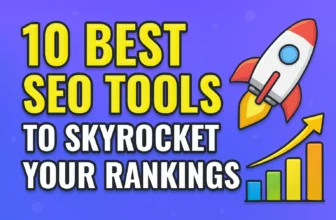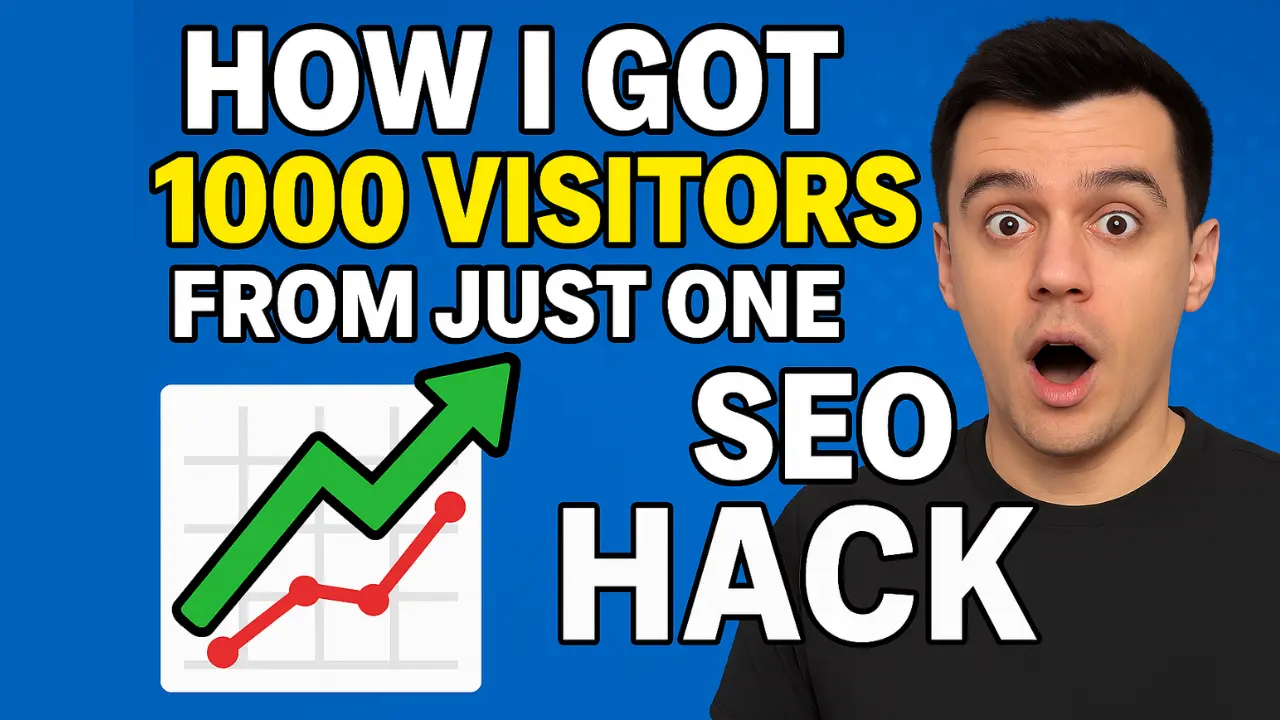
Search Engine Optimization (SEO) in 2025 is a dynamic battlefield where creativity, data, and adaptability reign supreme.
With search engines like Google continuously evolving their algorithms, leveraging AI, and prioritizing user experience, traditional SEO tactics alone won’t cut it.
To stay ahead, you need innovative, sometimes unconventional strategies that push boundaries while delivering measurable results.
In this comprehensive guide, we’ll explore 7 Crazy SEO Hacks That Actually Work in 2025, diving deep into each tactic with actionable insights, examples, and tips to help you dominate search rankings. Buckle up—this is going to be a wild ride!
Hack #1: Leverage AI-Driven Semantic Content Clusters
Why It Works
Search engines in 2025 are hyper-focused on semantic search, prioritizing content that comprehensively covers a topic and aligns with user intent.
Gone are the days of keyword stuffing or writing isolated blog posts. AI-driven semantic content clusters allow you to create interconnected content ecosystems that signal authority to search engines while providing immense value to users.
How to Implement
- Identify Core Topics: Use tools like AnswerThePublic or Semrush’s Keyword Magic Tool to find broad topics relevant to your niche. For example, if you run a fitness blog, a core topic might be “strength training.”
- Map Subtopics: Break the core topic into subtopics (e.g., “weightlifting for beginners,” “best strength training exercises,” “nutrition for muscle gain”). Aim for 5–10 subtopics.
- Create a Pillar Page: Write a comprehensive, 2,000–3,000-word pillar page that covers the core topic broadly but links to detailed subtopic pages (500–1,000 words each).
- Interlink Strategically: Use internal links to connect the pillar page to subtopic pages and vice versa. Ensure anchor text is descriptive and natural.
- Use AI Tools: Leverage AI writing assistants like Jasper or Grok (yes, I’m biased!) to generate content ideas, outlines, and even drafts for subtopics. Fine-tune the output to maintain your brand voice.
- Optimize for Entities: Incorporate related entities (e.g., “protein supplements,” “dumbbells”) to enhance semantic relevance. Tools like MarketMuse can help identify entity gaps.
Example
A fitness brand creates a pillar page titled “Ultimate Guide to Strength Training” with links to subtopic pages like “How to Start Weightlifting” and “Top 10 Strength Training Mistakes.”
Each subtopic page links back to the pillar and other related subtopics, forming a tight content cluster. Over six months, the pillar page ranks in the top 5 for “strength training,” driving 10,000 monthly organic visits.
Pro Tip
Use Google’s Natural Language API to analyze your content’s semantic relevance and ensure it aligns with top-ranking pages for your target keywords.
Hack #2: Exploit Zero-Click Content for Featured Snippets
Why It Works
Zero-click searches—where users get answers directly on the SERP via featured snippets, knowledge panels, or “People Also Ask” (PAA) boxes—are dominating in 2025.
Capturing these spots boosts visibility and drives traffic, even if users don’t click through immediately.
How to Implement
- Target Question-Based Queries: Use tools like Ahrefs or AlsoAsked to find high-volume, low-competition questions in your niche (e.g., “How long does it take to see SEO results?”).
- Structure Content for Snippets: Answer questions concisely (40–60 words) in a paragraph, list, or table format. Place the answer immediately below an H2 or H3 heading.
- Optimize for PAA: Create dedicated sections for PAA questions. For example, include a FAQ section with 3–5 related questions and succinct answers.
- Use Schema Markup: Implement FAQPage or HowTo schema to increase your chances of appearing in rich snippets.
- Monitor Competitors: Analyze top-ranking pages for your target keywords using SurferSEO to identify snippet opportunities they’re missing.
Example
A digital marketing blog targets “What is SEO?” with a concise, 50-word answer under an H2 heading: “What is SEO?” The answer includes a definition, key components (on-page, off-page, technical), and a stat (e.g., “70% of clicks go to the top 3 results”). Within three months, it secures the featured snippet, increasing impressions by 200%.
Pro Tip
Regularly refresh your snippet-targeted content to maintain rankings, as Google frequently tests new pages for featured snippets.
Hack #3: Gamify User Engagement for Dwell Time
Why It Works
Google’s algorithms in 2025 heavily weigh user engagement metrics like dwell time (how long users stay on your page) and bounce rate. Gamifying your content keeps users engaged longer, signaling quality to search engines.
How to Implement
- Add Interactive Elements: Embed quizzes, polls, or calculators using tools like Typeform or Outgrow. For example, a finance blog could include a “Retirement Savings Calculator.”
- Incorporate Micro-Animations: Use subtle animations (e.g., progress bars, hover effects) to make content exploration fun. Tools like LottieFiles can help.
- Create Scroll-Based Reveals: Use JavaScript libraries like AOS (Animate on Scroll) to reveal content as users scroll, encouraging them to stay longer.
- Personalize Content: Implement dynamic content based on user behavior (e.g., showing different CTAs based on referral source) using tools like Optimizely.
- Track Engagement: Use Google Analytics 4 to monitor dwell time and tweak elements that underperform.
Example
A travel blog adds a “Which Destination Suits You?” quiz to its “Top 10 Travel Destinations” page. Users spend an average of 4 minutes on the page (up from 1 minute), reducing bounce rate by 30% and boosting rankings for “best travel destinations.”
Pro Tip
Test gamified elements with A/B testing tools like VWO to find what resonates most with your audience.
Hack #4: Hijack Competitor Backlinks with Skyscraper 2.0
Why It Works
The Skyscraper Technique—creating better content than competitors and earning their backlinks—still works, but in 2025, it’s about precision and scale. By targeting low-hanging fruit and leveraging AI, you can “hijack” competitor backlinks faster.
How to Implement
- Find Link-Worthy Content: Use Ahrefs or Moz to identify competitor pages with high backlink counts but outdated or thin content.
- Create Superior Content: Go beyond “10x better.” Add unique data, visuals, or tools (e.g., infographics, downloadable templates). Use AI tools like Canva for visuals or Tableau for data-driven charts.
- Outreach at Scale: Use Hunter.io to find email addresses of sites linking to the competitor’s content. Craft personalized outreach emails with tools like Mailshake, highlighting why your content is better.
- Leverage Social Proof: Mention endorsements, shares, or stats (e.g., “Featured on Forbes”) to make your pitch compelling.
- Monitor Results: Use BuzzSumo to track shares and Ahrefs to monitor new backlinks.
Example
A SaaS company identifies a competitor’s outdated “Top 20 Productivity Tools” post with 200 backlinks. They create a “50 Productivity Tools for 2025” guide with interactive demos and secure 150 of the competitor’s backlinks within two months, boosting their domain authority by 10 points.
Pro Tip
Focus on “link gap” opportunities—sites linking to multiple competitors but not you—using Ahrefs’ Link Intersect tool.
Hack #5: Optimize for Voice Search with Conversational Content
Why It Works
With the rise of AI assistants like Grok (wink!) and smart speakers, voice search is a major traffic driver in 2025. Voice queries are longer, conversational, and often local, requiring a different optimization approach.
How to Implement
- Target Long-Tail Conversational Queries: Use tools like KeywordTool.io to find voice search queries (e.g., “What’s the best coffee shop near me?”).
- Write Conversationally: Mimic natural speech in your content. For example, instead of “Best coffee shops,” write “Here’s why these coffee shops are the best in [city].”
- Optimize for Local SEO: Claim your Google Business Profile, add location-specific keywords, and ensure NAP (Name, Address, Phone) consistency.
- Use Structured Data: Implement Speakable schema to signal voice-friendly content to search engines.
- Answer Directly: Address voice queries with clear, concise answers in the first paragraph or a dedicated FAQ section.
Example
A local bakery optimizes for “Where can I find the best cupcakes in Seattle?” with a blog post titled “Why Our Seattle Cupcakes Are the Best (and Where to Find Them).”
The post includes a Speakable schema and ranks in the top 3 for voice searches, driving 500 monthly in-store visits.
Pro Tip
Test your content’s voice search compatibility by reading it aloud or using a tool like VoiceBot to simulate queries.
Hack #6: Use AI-Generated Video Content for SERP Domination
Why It Works
Video content is a ranking juggernaut in 2025, with Google prioritizing rich media in SERPs. AI-generated videos are cost-effective, scalable, and can be optimized for SEO to capture video carousels and featured snippets.
How to Implement
- Create AI Videos: Use tools like Synthesia or Runway to generate short, engaging videos (1–3 minutes) on key topics. For example, a tech blog could create a video on “How to Set Up a Smart Home.”
- Optimize for SEO: Include target keywords in the video title, description, and tags. Upload to YouTube and embed on your site with a transcript.
- Add Schema: Use VideoObject schema to help search engines understand your video content.
- Promote on Social: Share snippets on X and TikTok to drive views and backlinks.
- Repurpose Content: Turn video transcripts into blog posts or infographics to maximize ROI.
Example
A home improvement site creates a 2-minute AI-generated video on “DIY Kitchen Remodeling Tips” using Synthesia. The video ranks in Google’s video carousel, driving 15,000 views and 2,000 site visits in one month.
Pro Tip
Use TubeBuddy to analyze competitor video performance and identify keyword gaps.
Hack #7: Build E-E-A-T with AI-Powered Expert Profiles
Why It Works
Google’s E-E-A-T (Experience, Expertise, Authoritativeness, Trustworthiness) is critical in 2025, especially for YMYL (Your Money, Your Life) niches. Creating AI-powered expert profiles enhances your site’s credibility and rankings.
How to Implement
- Create Author Bios: Write detailed bios for content creators, highlighting credentials, experience, and publications. Use AI tools like Copy.ai to draft professional bios.
- Showcase Expertise: Publish guest posts on reputable sites (e.g., Medium, Forbes) and link back to your author page.
- Leverage Social Proof: Include testimonials, certifications, or media mentions on author pages.
- Use AI for Consistency: Ensure all content aligns with your brand’s expertise using tools like Grammarly or Hemingway.
- Link to Profiles: Add author bylines with links to their profiles on every piece of content.
Example
A health blog creates an author profile for a nutritionist, including her PhD credentials, published studies, and a link to her LinkedIn. Content attributed to her ranks 20% higher than generic posts, boosting site trust.
Pro Tip
Use Google Scholar to find and cite your authors’ publications, reinforcing their expertise.
Conclusion
SEO in 2025 demands creativity, technical savvy, and a user-first mindset. These 7 Crazy SEO Hacks—from AI-driven content clusters to gamified engagement and video optimization—offer innovative ways to outrank competitors and drive traffic.
The key is to combine data-driven insights with bold experimentation. Start small, test relentlessly, and scale what works. Which hack will you try first? Let me know in the comments or on X—and happy optimizing!






